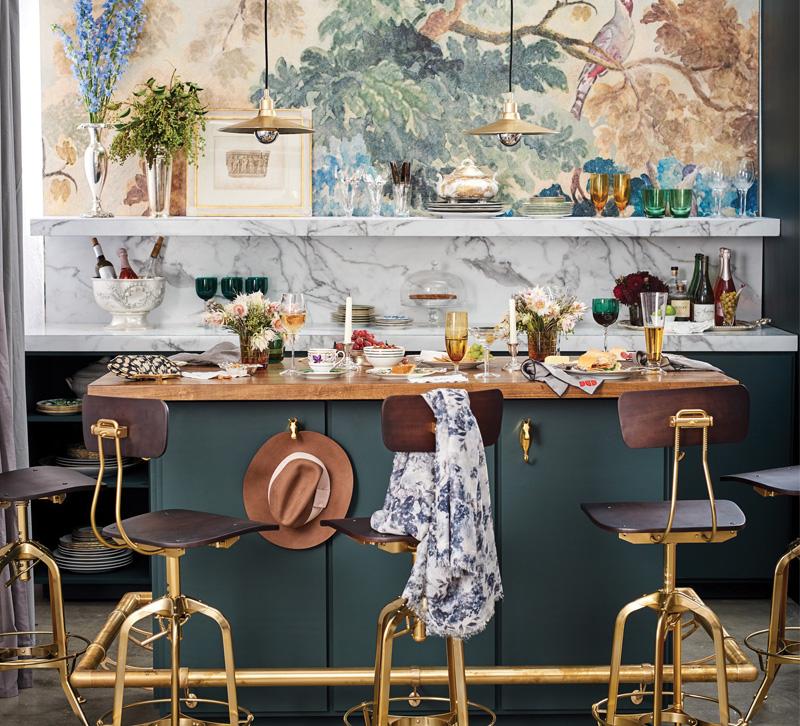On today’s menu: vintage china. An increasing number of tables in homes and, surprisingly enough, some of the hottest restaurants and cafes across the country, are being dressed in lovely, heirloom pieces beloved by generations past, mixed and matched in a riot of pattern and color.
From the pages of Instagram to the Washington Post, the look now is “charming and pretty and layered with beautiful things that feel rich and give the impression that somebody really thought about you when they set the table,” describes Wendy Glaister, Principal of West Coast-based Wendy Glaister Interiors.
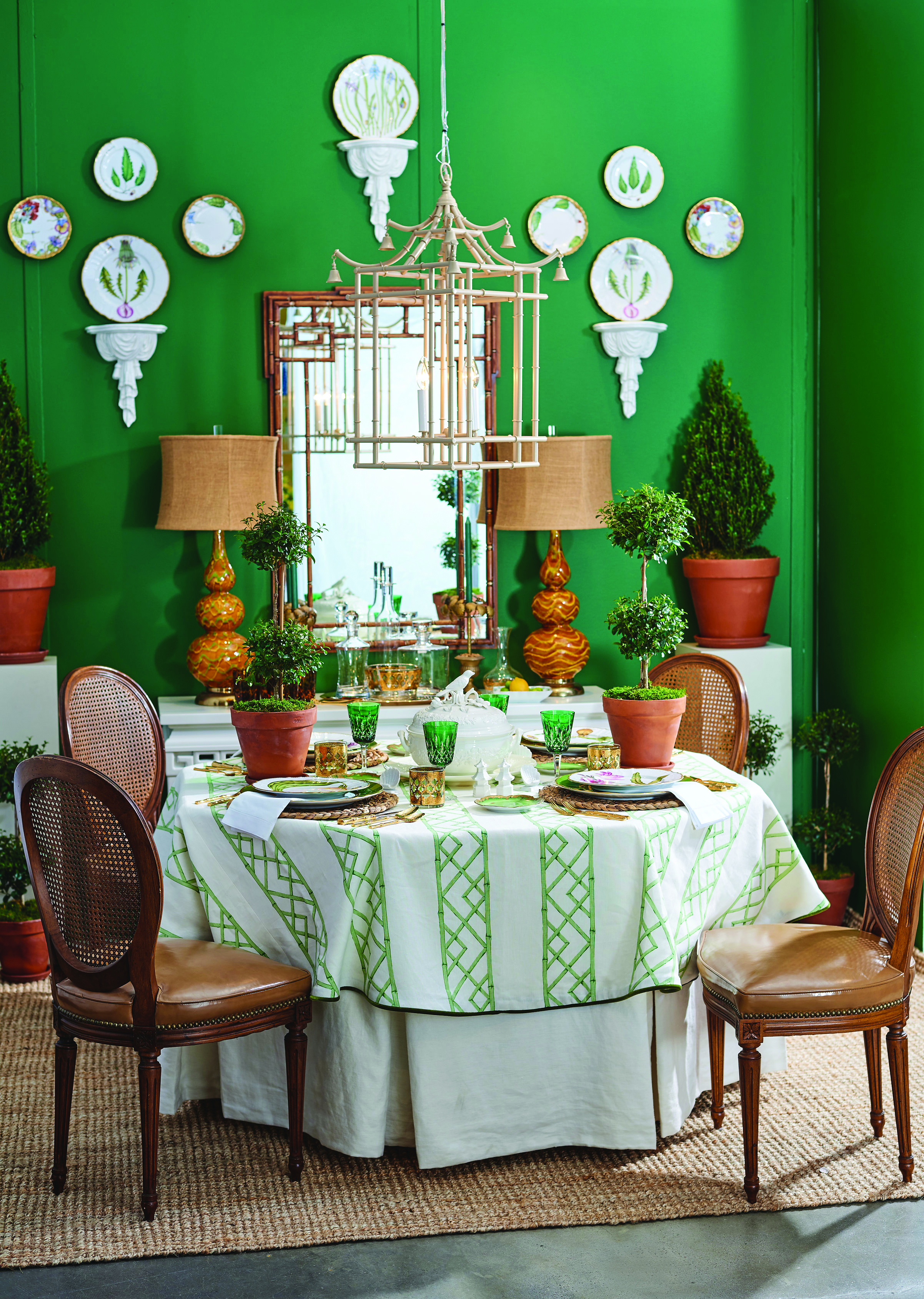
“People are gravitating toward things that feel a bit more curated, collected and inherited now,” relates acclaimed interior designer Thom Filicia. “They want things that are unique, maybe a little eccentric and quirky, that have a history and substance. I see this not just with my clients, but across the world of style and design, whether it’s restaurants, hotels or homes. There’s this kind of mix happening now and people are putting their own spin on things. It’s happening in fashion, and it’s happening in decor. People are having fun reimagining things that we’ve seen before.”
NYC-based interior designer and lifestyle expert Robin Baron concurs. “I love to go on the hunt for vintage china and glassware and serving pieces, in the same way I love to hunt for modern pieces. And I love to mix them together, to do old and new in unexpected ways. To me, tabletop is another creative expression of your style, creativity and how you like to entertain.”
The trend was clearly in evidence at market last month, particularly inside the Alden Parkes space, where the better-end furniture maker partnered with tableware giant Replacements, Ltd., to stage “Dining by Design,” an extension of its popular “Showhouse in a Showroom” concept. The special, market-long event married eight notable designers with access to Replacements’ massive inventory (at any given time the Greensboro, NC-based company has some 450,000 tabletop patterns on hand), and Alden Parkes’ furniture in show-stopping displays focused on how to dine, gather and entertain now.
Table Talk
In light of today’s more casual lifestyles, the growing interest in setting the table with grandmother’s “good stuff,” intermingled with new and modern pieces may seem a bit counter-intuitive, but designers say it was only a matter of time before the preference for eclectic decorating styles began making an impact on the tops of tables, as well as on the tables themselves.
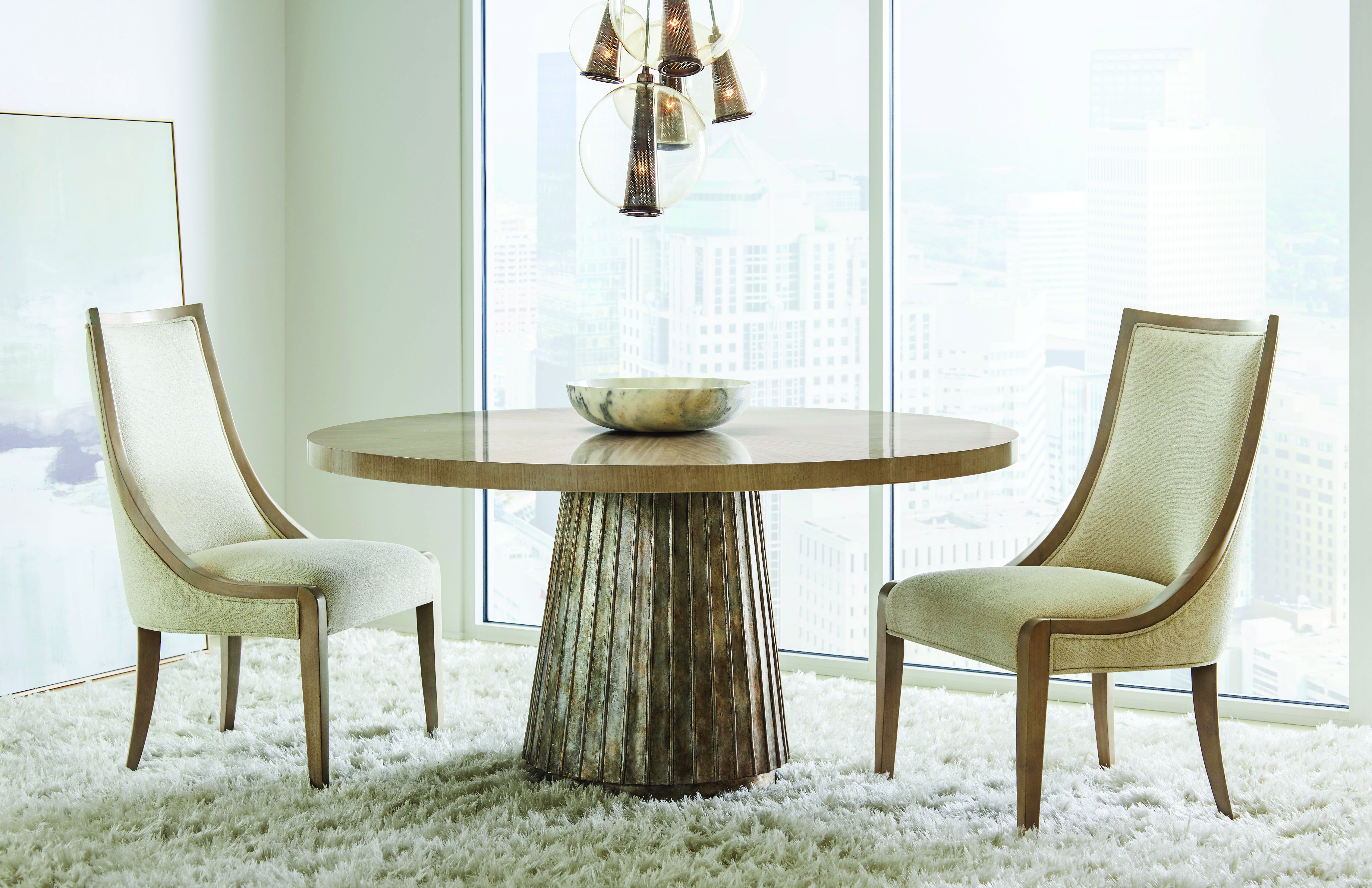
“In my opinion, dining room casegoods — tables, buffets and chairs — are changing somewhat and partly it’s because people are expressing themselves through the jewelry and ornamentation, the ‘Granny’ china or customized, high-end china,” comments Tom Tilley, Vice President of Product Development at Stanley Furniture. “The table and the case pieces are backdrops for the jewelry, like a little black dress is to a string of pearls.” And though he is noting an increased interest in more traditional designs now, he still believes consumers are looking for less formality in the dining room.
The key words are simple, clean, pure, easy-to-understand, flexible and functional, with relaxed, livable finishes. “Door-fronted buffets have replaced china cabinets as the dominant case pieces both in dining rooms and in large, expansive kitchen dining areas,” the executive says, “and that’s being driven not only by purely functional storage purposes, but also self-expression and customization. Unlike china cabinets that were great big pieces of furniture that took up wall space, the buffet is a great backdrop for the artwork and mirrors that people are opting to hang above them.”
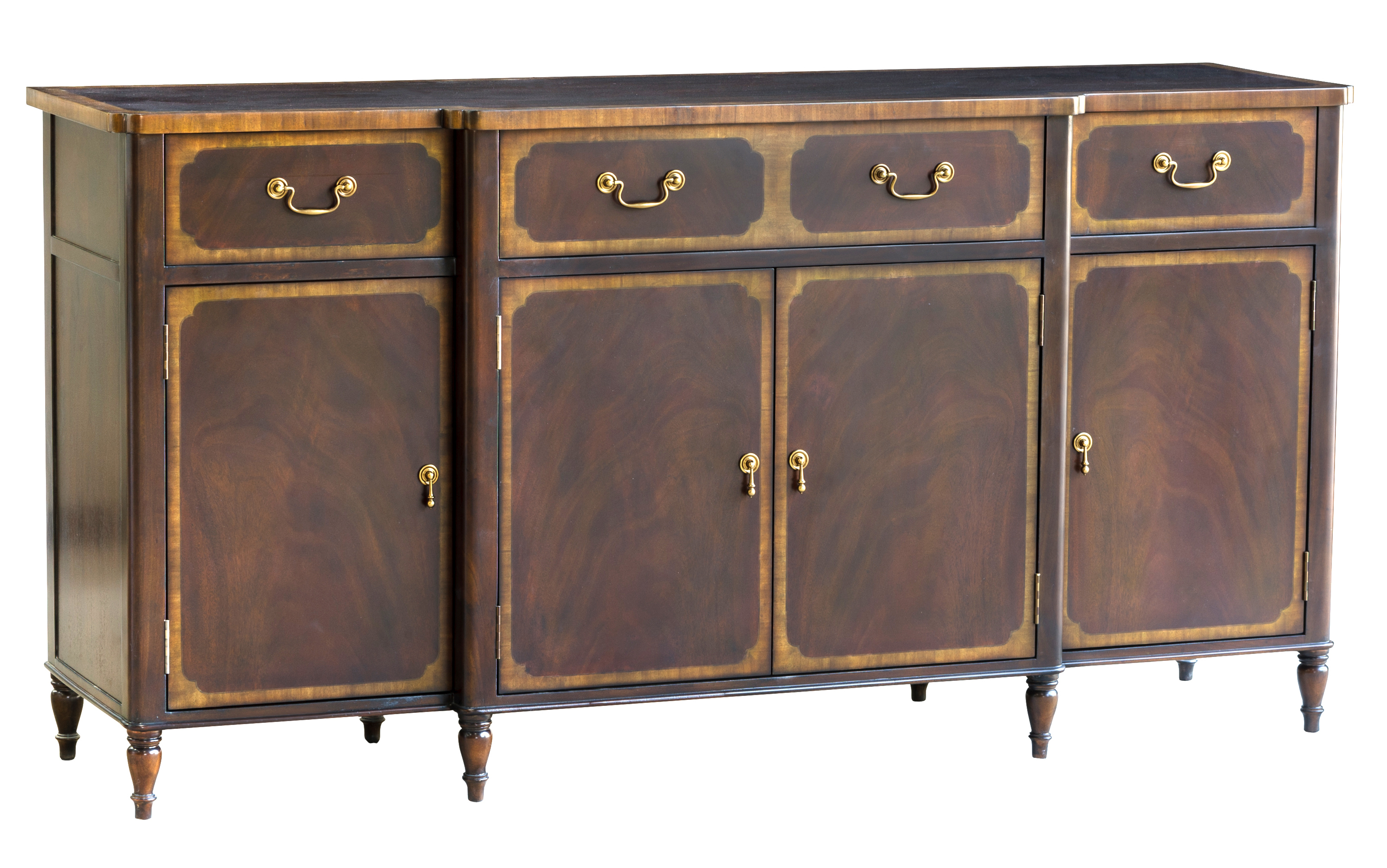
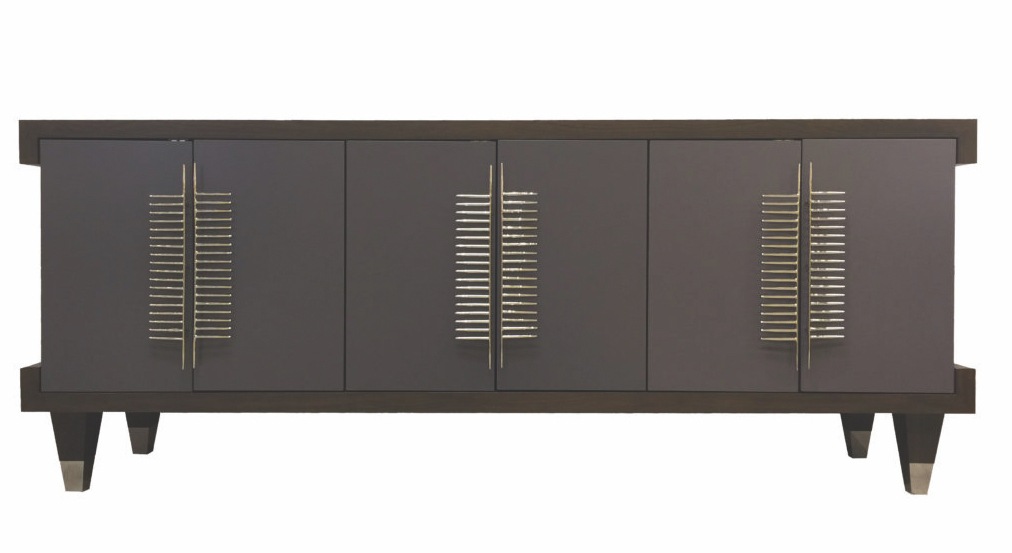
“In terms of consumer desires, downsizing boomers still want to retain the history of family, albeit with more simplified design,” says Lynne McArdle, President of Alden Parkes, “and the trend toward less formal and more casual dining furnishings supports what is happening in tabletop with the emphasis on vintage, warmth and coziness. Millennials, who want experiences versus ‘things,’ want furniture that is multifunctional, easy to care for and friendly. The emphasis now is on less formal, more frequent usage, so it makes sense that we’re seeing more forgiving finishes along with designs for smaller spaces.”
Stylewise, “we are moving out of minimalism and dry color palettes and there’s a major nod to vintage and traditional styles, patterns and color happening now in dining furniture and decor,” reports furniture designer Catina Roscoe, founder of Catina Unlimited Design and President of the International Society of Furniture Designers. “But it’s important to note that while the traditional influence in furniture styling is growing, it does not follow the formality of traditional product in the past. Collections, especially in dining furniture, are an eclectic mix of materials, patterns, colors and forms that allow for the experience to be about the ambience, food and gathering of friends and family. We live casual lives, and though we might reach back to comforting memories of the past, we are doing so within the parameters of the technology, scale and space we live in now.”
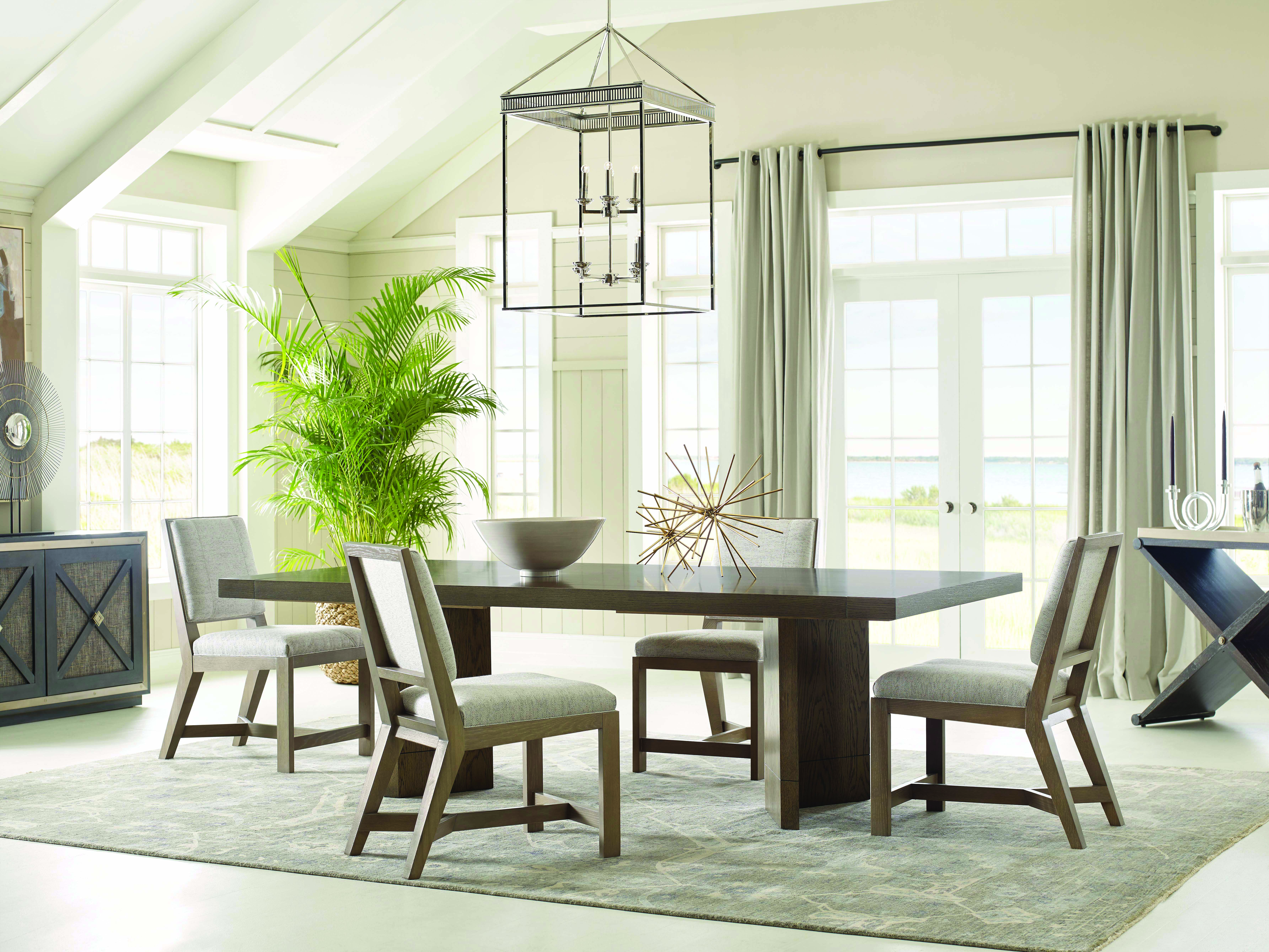
“The china cabinet was designed so you could look but not touch. It was about protecting and preserving but you couldn’t really participate with the objects inside,” Filicia believes. “And we have to understand that how people are participating with these objects is different now. This is a different way of looking at luxury. It’s not about putting things in a room that no one goes into, where you just walk by and look and think, ‘Oh that’s cool,’ and then you keep going. People are bringing these objects into their world and they are using them, living with them, enjoying them and talking about them because they have a story, and that story is so important, because that’s how people connect emotionally.”
The New Dining Room
“I think people have a real aversion to a space that you just walk through except for twice a year,” Glaister notes, “and that connects to the Feng shui principle where all the rooms have to be ‘living’ in order to have a healthy home. Growing up, we had this white shag carpet in our fancy living/dining room, and it was our job on Saturday mornings to vacuum, and it had to be in rows, like a good lawn service. It’s kind of interesting, generationally, how it’s changed. When I watch my mom and dad with my son, they’re so much more lenient with him than they ever were with me and seeing them prioritize the relationship over ‘stuff’ has helped to redo my thinking about how I want my home to feel.”
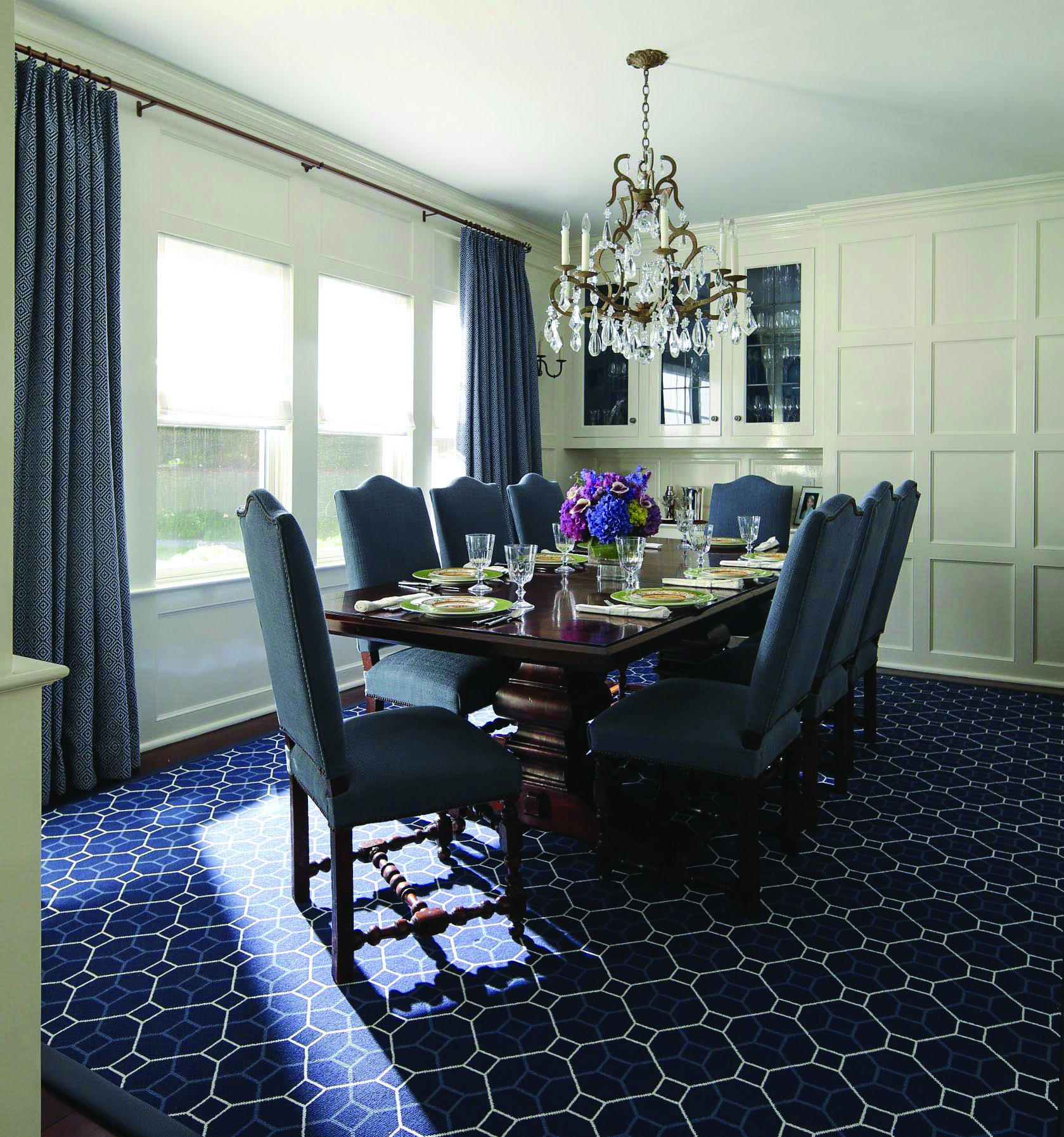
Despite the decades-long trend toward open-plan design, which in many cases eliminated formal dining rooms altogether, dedicated dining rooms are also in demand once again. “The dining room might not be the biggest room in the house, but they’re there in every new construction house in our region,” reports Westchester, NY-based designer Elissa Grayer. “I’m finding that everyone wants one and they want to use it, but they also want everything in it to be child-friendly. Here in the suburbs it’s either traditional or transitional, but not crazy traditional like the racetrack tables with high-gloss finishes. They want something timeless looking, and they’re prepared to spend some money on the tables.”
And that, says Retail Strategist Connie Post, of Connie Post Affordable Design Solutions, sets the table for furniture retailers wishing to capitalize on current trends. “I would suggest immediately stepping up store displays with real china instead of cheap dish sets, and this doesn’t have to require a big expenditure. Merchandisers can find vintage pieces in their local Goodwill or flea markets, because ‘mismatched’ is part of the fun and the color story. Then host a seminar on the art of entertaining in the dining department and demonstrate how this is all about celebrating life with friends and family. And yes, serve the prosecco or mimosas in real crystal!”
The Human Element
Linh Calhoun, Senior Vice President and Chief Marketing Officer at Replacements, suggests the renewed interest in vintage china may actually be rooted in our basic need for human interaction. “Technology provides so much in terms of ease and convenience in our lives, but it also removes some of the human touch points. One of the things that is fundamental to our business, and really one of the reasons Replacements was started, is that vintage china and silver can connect you to your personal history.”
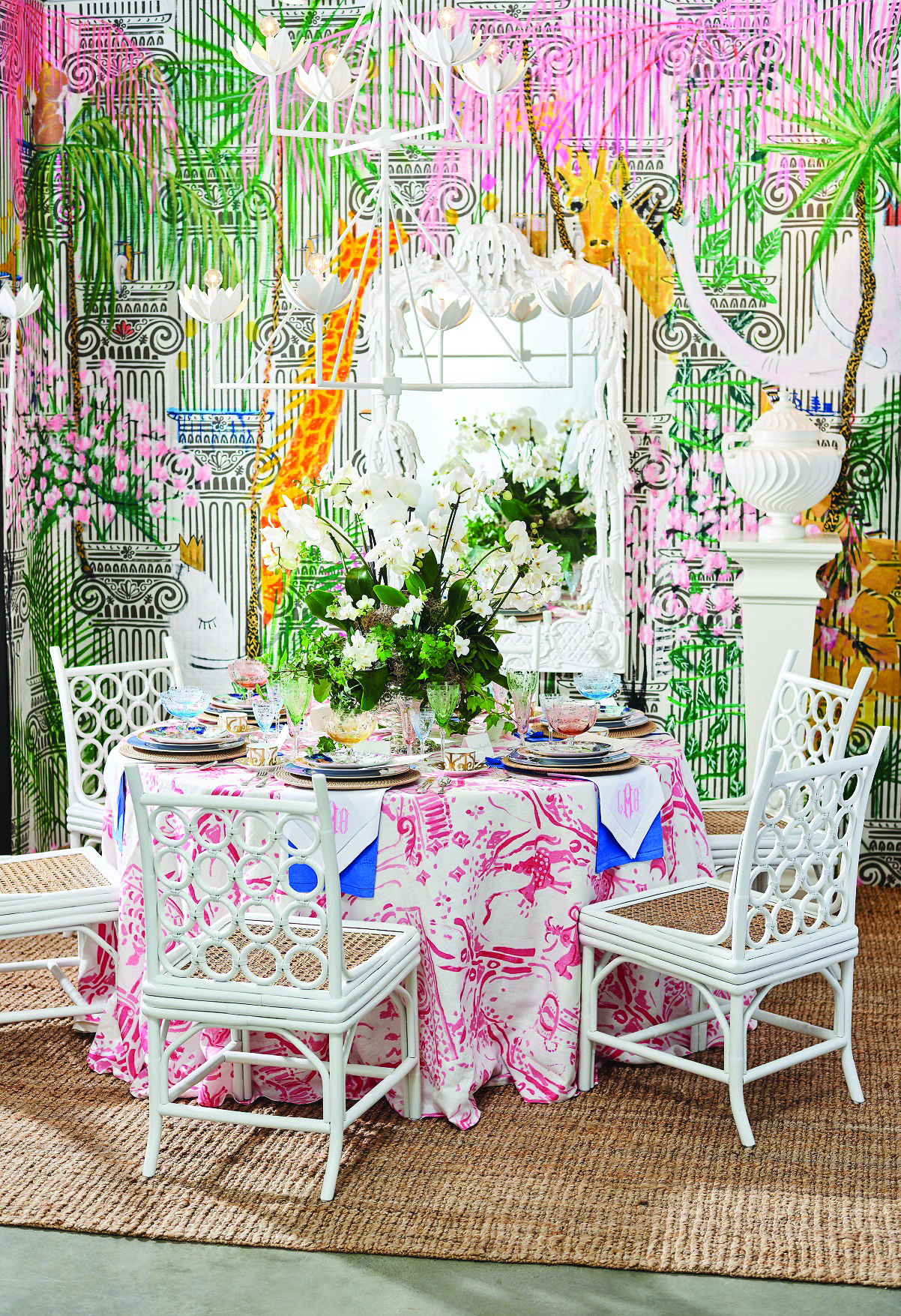
She speaks from personal experience: “We all get to work in different areas of our company and I was unpacking china during the holidays. I unwrapped some Corelle dishes, the mustard-y colored ones, and I immediately had this very clear image of my great-grandparents doing the dishes in the kitchen after dinner and setting the table for their morning breakfast. I held that plate in my hand and I could hear their voices. I hadn’t realized that it could touch me that deeply, and I thought, ‘This is why we do what we do. We connect our customers to memories that last a lifetime.’”
“Years ago, people would receive china as wedding gifts or it was inherited, handed down as a family heirloom,” says interior designer Thom Filicia, who himself uses vintage Limoges collected by his mother. “The difference is that today, rather than display the pieces in glass-fronted cabinets and maybe use them once or twice a year, they are being integrated into our everyday lives.”
“Nothing is so precious that you can’t share it with your most precious people,” Wendy Glaister says, “but it’s not the seven-course, ‘I-want-to-impress-you’ kind of experience anymore. I think the first indicator was when Gourmet magazine ceased to exist. Now it’s Christopher Kimball and Milk Street, and when we want to have friends over, it’s ‘Let’s have a couple of great cocktails, or find a couple of bottles of wine we want to share, and then figure out what food we want to put with that and just enjoy each other.‘ They want it to be a little more approachable and comfortable, so it might be take-out Thai and cocktails served in Grandma’s crystal. And, since the dining chairs are covered in Crypton and the rug under the table is stain-resistant, it doesn’t matter if somebody spills the wine.”



